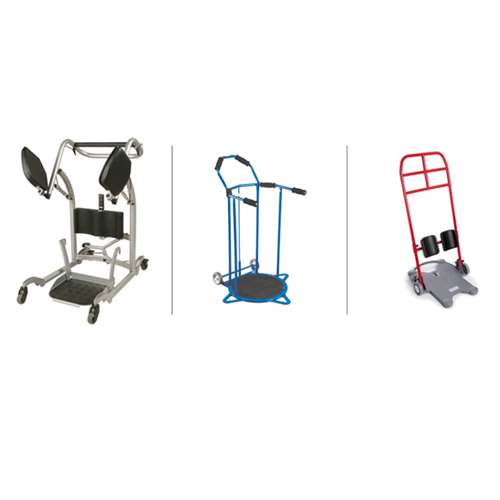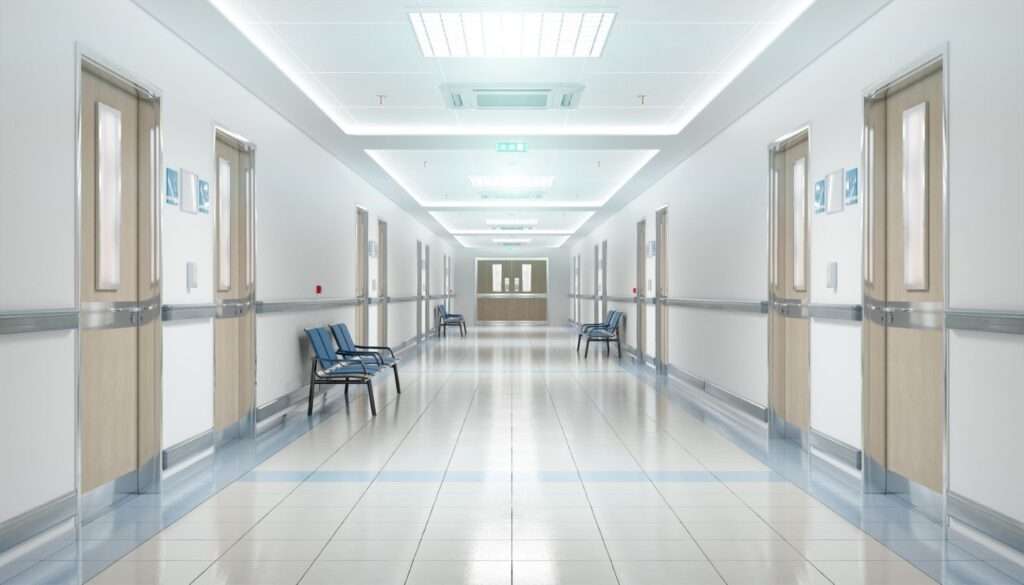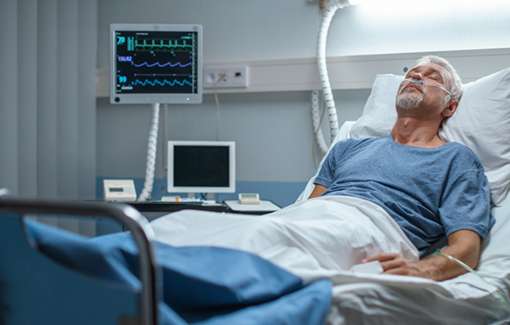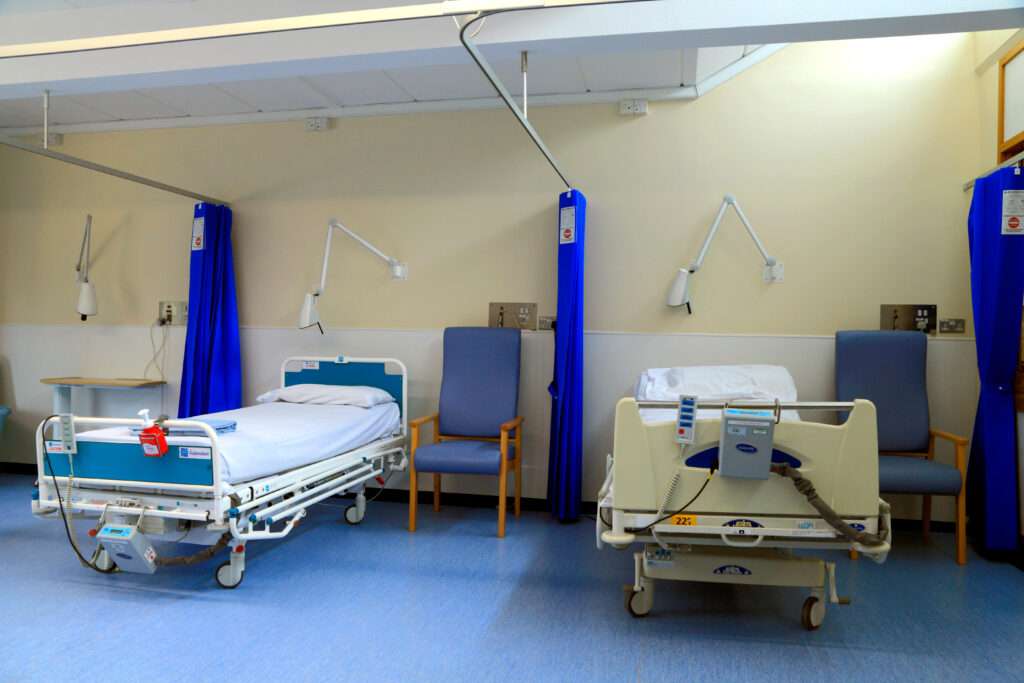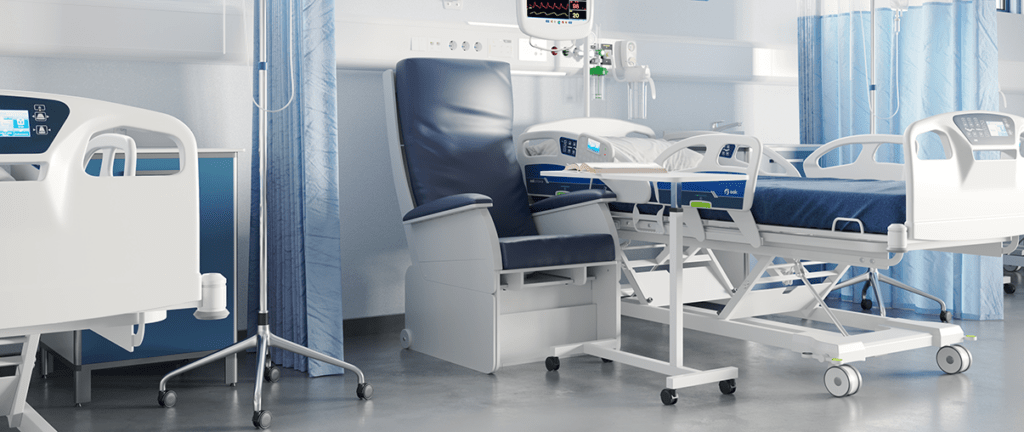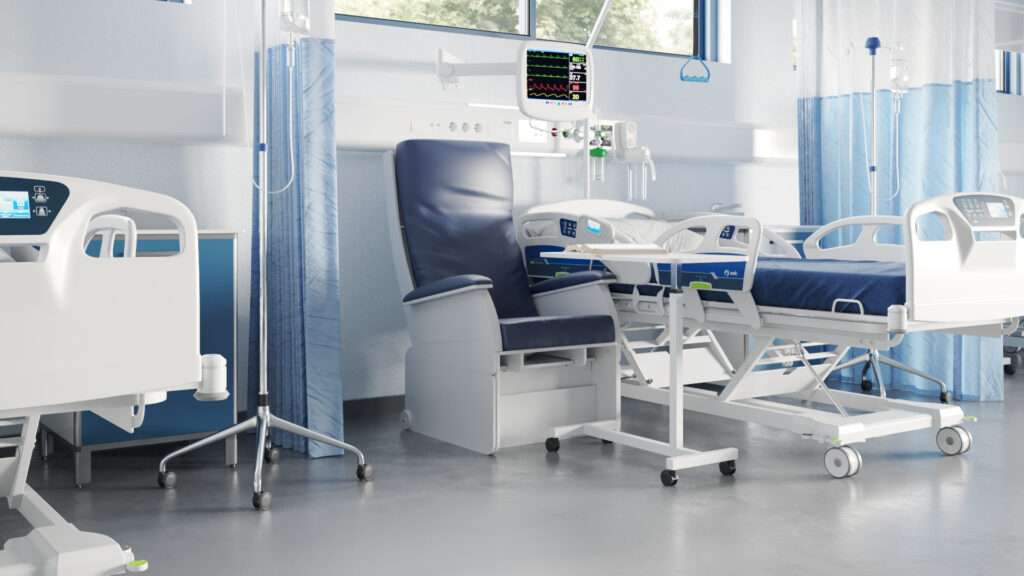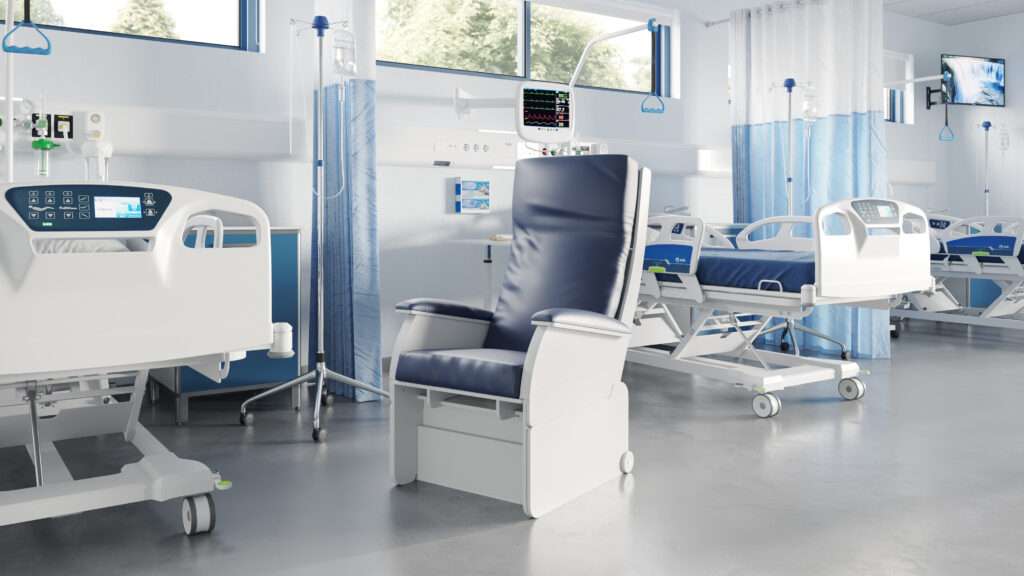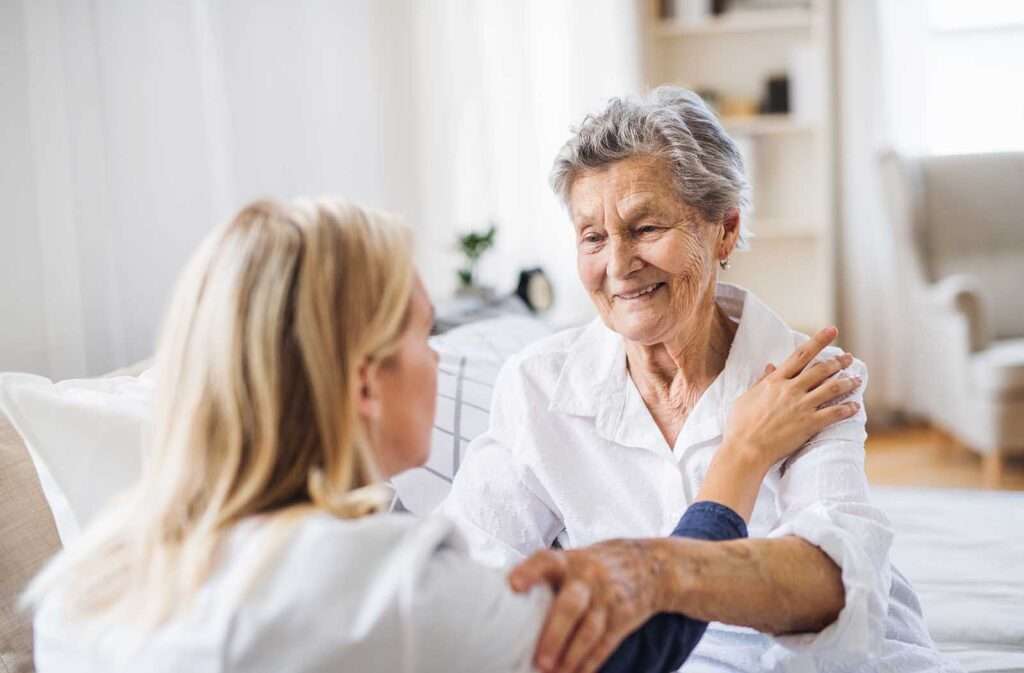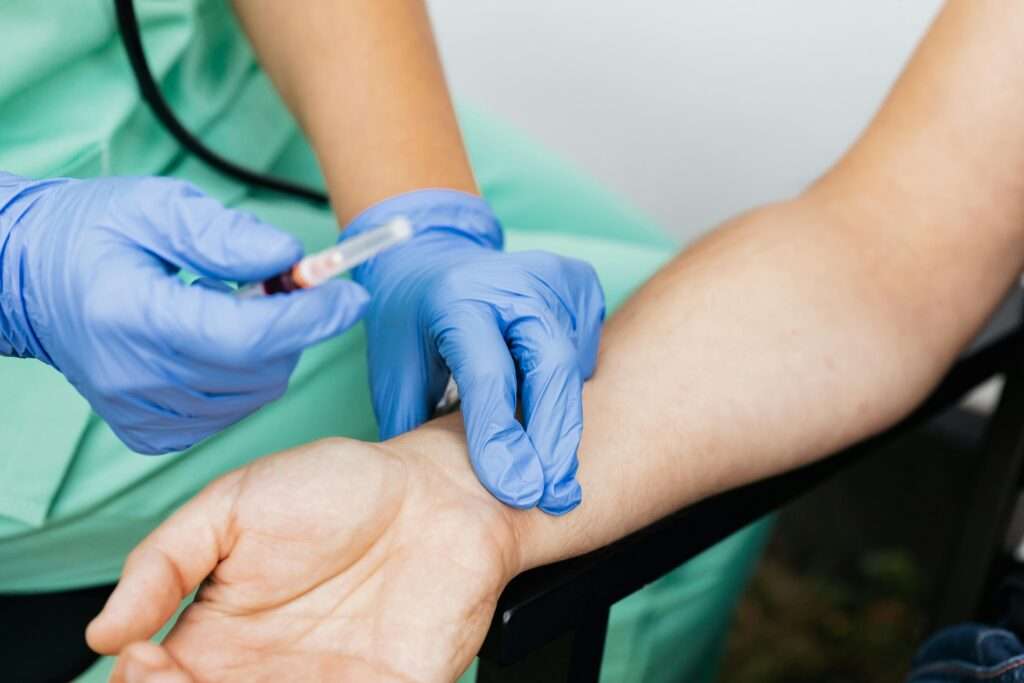What Is a Standing Aid?
Standing aids are assistive devices that provide support and aid people who have balance & mobility issues or have lost the strength to stand independently, stand aids are very useful for the elderly & disabled.
In the moving and handling industry, standing aids have completely changed the way that care professionals can help patients by allowing care givers to transfer patients from siting to standing positions without strain or injury caused to either party.
They help to promote mobility in patients who can perform part of an action independently but require an assistive device to aids them in doing this.
Falling under the general umbrella of ‘mobility aids’, standing aids also serve a very similar function to transfer aids & turning aids. While closely linked, these items do serve individualised purposes that can at times cross over with each other.
Who Needs a Standing Aid?
Standing aids can be used whenever a person needs a piece of equipment to increase mobility, a standing aid may be advisable.
This will be determined with the help of an assessment completed by a qualified professional like an Occupational Therapist or a Physiotherapist.
Standing aids are not necessarily intended for people of a specific age or to deal with specific conditions but they are mostly used as a mobility aid by the elderly and disabled.
Standing Aids for Rehabilitation:
Patients who have gone through a sustained period in hospital can find it difficult to quickly adjust and gain strength back in their legs.
In these situations, standing aids can be a great help as they will assist the patient with their rehabilitation journey.
Some standing aids can also be operated by just one person allowing people meaning that individual patients can rehabilitate at their own pace if they choose to.
These single user operated standing aids can be an empowering tool that also helps users build and regain confidence while in rehab as they rely on their own ability to recover.
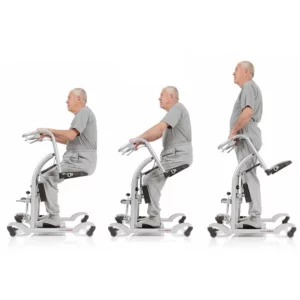
The QuickMove is an active transfer aid designed and crafted to support individuals with poor balance and lower limb strength.
Maintaining Standing Ability:
There is a risk of muscles becoming weaker and long-term muscle atrophy developing in patients that spend prolonged periods of time on beds & chairs in care settings.
There is also an increased risk of developing pressure injuries if patients are spending time non-specialised clinical chairs and beds.
These very serious health risks mean that the correct standing aid given to a patient at the right time can be critical
As is the case when walking aids are used for rehabilitation, these assistive devices can be operated by a single user — other users may need assistance from a carer but in these cases, a single assistant along with the mobility aid is usually enough.
Pressure Ulcer/Care Management:
Patients with limited mobility are the most susceptible to developing pressure ulcers.
This risk grows if they lack the correct pressure care seating equipment.
Pressure care managing beds and mattresses are available, but the best way to manage pressure injuries is to avoid them altogether.
This is most effectively done by moving around and relieving pressure on the bony prominences of a patient’s body that are most likely to develop a pressure injury.
The European Pressure Ulcer Advisory Panel (EPUAP) — who recommend that repositioning and early mobilisation is done as early as is feasible — also recommend that “Individuals on bedrest should progress to sitting and ambulation (moving & walking) as rapidly as they can tolerate.”
A standing aid is extremely useful in this situation as the user can alleviate pressure on at risk parts of their body.
Along with adding mobility, a standing aid in this situation can actually avoid further unintended injury to the patient by ensuring that they are able to stand frequently.
What To Look For In a Standing Aid:
Weight Capacity:
You should consider the weight capacity that the standing aid is able to bear. If multiple people are going to use the standing aid, then it is relevant to consider this as users and patients can vary and a versatile standing or transfer aid is the best way to prepare for this.
Is There a Portable Battery?
A mechanised standing aid with a battery that is easy portable and replaceable is the ideal way to go for most people who opt for a mechanised piece of equipment.
This allows the battery to be easily replaced when empty and replaced with another, fully charged one.
Servicing & Maintenance:
There’s no way to know what the future holds and standing aids are a sizeable investment. For these reasons, it is important that you consider all manufactures available and find one that offers you an adequate service agreement. This could cover parts replacements, installations and any issues that may present themselves later down the line.
Types of Standing Aid:
There are different types of mobility aids to help with standing available. These are mainly mechanised & non-mechanised. They vary in the levels of support offered, the equipment that can be added on and in they way they are operated.
Mechanised Standing Aid:
This type of standing aid is automated and can have slings attached to enable a person to keep a standing position while the with slings that enable a patient to maintain a standing position during the transfer.
The mechanised, or powered standing aids are usually made with a battery-powered electric lifting mechanism.
It is operated with simple up and down buttons that can be hand controlled. This lifting device is designed to make the raising & lowering of a user a smooth process for both carer and patient.
Non-Mechanised Standing Aid:
These types of manual standing aids, sometimes referred to as a transfer aid and provides no mechanical assistance with the transfer.
The positive with these mobility aids is that they offer leverage and can turn the patient (90 or 180 degrees) without them physically needing to do so themselves.
Summary
Finding the right standing or mobility aid for an elderly or disabled person is a process that must be done with care to effectively serve a user’s needs. Their environment must be right for the aid just as the standing aid should be right for the person it is intended for.
It is recommended that a Physiotherapy or Occupational Therapy assessment is done to establish suitability.
At Vivid.Care, our trained professionals can offer you a no-obligation assessment to help you determine your specific need.
Simply fill in the form below and we will be in contact with further details.





